Decades in the making, 'Halston' was a 'labor of love' for series' director
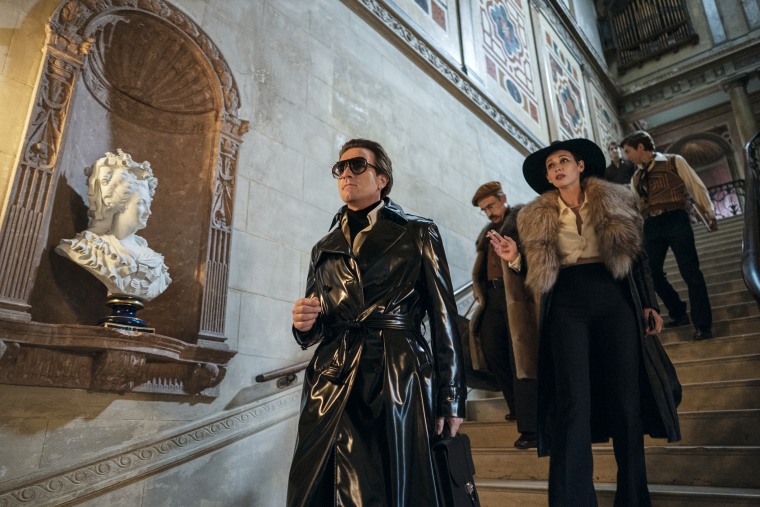
More than two decades after he tried to bring the life story of Roy Halston Frowick to the big screen, director Daniel Minahan has teamed up with the likes of Ryan Murphy and Christine Vachon — two heavyweight producers of LGBTQ film and television — to produce “Halston,” a new Netflix miniseries about the legendary fashion designer.
The five-part drama, which stars Ewan McGregor in the titular role, chronicles the life and career of one of the most influential designers of the 20th century, who rose to prominence after designing the iconic pillbox hat that Jacqueline Kennedy wore when her husband was sworn in as president in 1961. With a flourishing international fashion empire, the mononymous designer took advantage of his growing social status in New York City before a hostile takeover in the ‘80s forced him to battle for control of his most precious asset: the Halston name itself.
Growing up in Danbury, Connecticut, Minahan immersed himself in a variety of lifestyle magazines — such as Vogue, After Dark and Interview Magazine — dreaming of living his life in the Big Apple, the city located about an hour and a half outside his hometown.
“Growing up, I felt out of place, and I spent all of my time imagining what my life in New York would be like,” Minahan told NBC News in a recent phone interview. “Halston, [Andy] Warhol and Liza Minnelli, these people were really fascinating to me, and I guess mostly just the fact that they had each other, and it seemed like this little movement that was happening not far away from where I was living.”
While working with Vachon on the award-winning 1996 film “I Shot Andy Warhol,” Minahan came across a book called “Simply Halston” by Steven Gaines, which detailed the rise and fall of the famed designer and served as a basis for the biopic. For the 58-year-old director, the idea that someone — let alone someone he admired so much — could “come to New York, make up that name and build an empire around it” and later be “stripped of his company, his name, his ability to create and, in a way, his identity” was something he just couldn’t seem to let go of, even after his plans to produce a feature film about Halston fell through in the mid-to-late 1990s.
“It really was a story that didn’t fit into a feature. You could focus on one aspect of his life, like the Battle at Versailles,” Minahan said, referring to a star-studded night in November 1973 where famous designers from the U.S. and France went head-to-head in a transatlantic fashion show. “But then you weren’t getting the whole story of the way he licensed his name or the way he lost his name. Or you could focus on one night after Studio 54 where everybody came back to his town house for a midnight breakfast, but it would be just about that moment.”
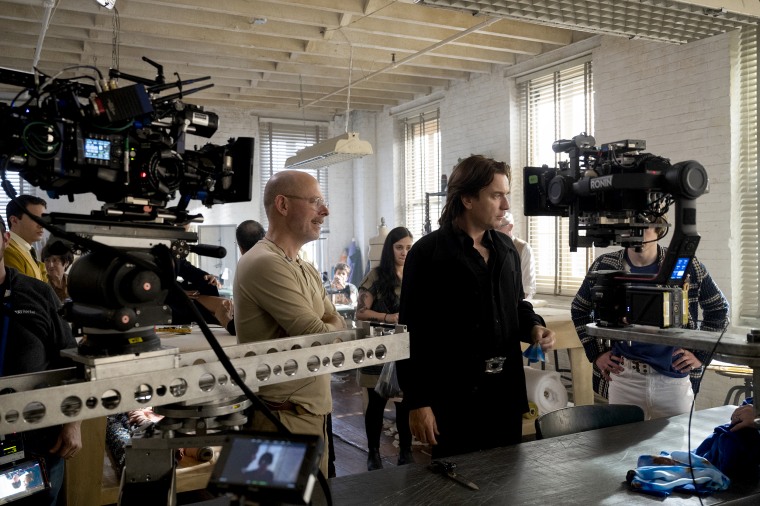
After several failed attempts to make a Halston film, Minahan said his “heart would sink” every time there was a Halston revival in the fashion world.
“But I finally let it go and put it into deep storage and really set out to learn my craft as a director,” he continued. “Then, about 2 1/2 years ago, Christine Vachon came back to me and said, ‘What do you think about doing it as a limited series?’ and it really made sense.”
As he began to conceptualize the series, Minahan met with McGregor, who had worked with Vachon on the 1998 musical drama film “Velvet Goldmine” and was fascinated by the complexities of Halston’s life and how he dealt with both fame and addiction. In their initial meeting, Minahan showed McGregor “a couple of Halston dresses and his fragrance bottle,” as well as a number of old photographs, which were enough for the accomplished actor to attach himself to the show before the pitching process.
While different studios and networks enjoyed the visual presentation of the pitch and the wealth of research that had already gone into the project, Minahan said “nobody was really committing to it” — until he received a call from one of his former collaborators.
“The phone rang and it was Ryan Murphy, who said, ‘I heard you’re out pitching a Halston show. I loved working with you [on 'The Assassination of Gianni Versace: American Crime Story'], I love Ewan, I loved the Halston story. Don’t give it to anybody else,’” Minahan recalled. “It started moving very quickly after that. Ryan really brought a lot of energy to it and a great insight into the idea of this self-made person who came to town and created an empire. I was really lucky to have him.”
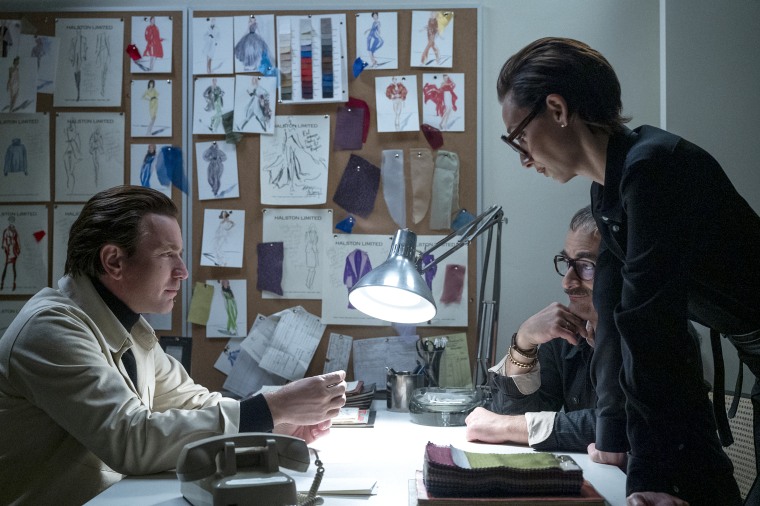
During pre-production, Minahan said he worked closely with McGregor and the rest of the production team to re-create, reimagine and immerse themselves in Halston’s lavish world. In addition to being fitted by Halston’s former tailor for some of the Ultrasuede jackets and trousers, McGregor looked for the same trivial items that Halston used on a daily basis (including notepads, pens and cigarettes); worked with a dialect coach to create his own interpretation of the designer’s uptown, mid-Atlantic accent; and learned how to handle, pin and cut fabric.
“I think Halston’s an interesting character because he’s such a construction — the way he carried himself, the way he spoke,” Minahan said. “He had a lot of armor, so we also set out to re-create that and try to imagine what he was like after hours when he wasn’t on camera, because all of our references for him are either in photographs or on video.”
Using the references they did have from the early ’60s to the late ’80s, costume designer Jeriana San Juan and production designer Mark Ricker were given the tall order of “re-creating the work of a master” and worked in tandem to ensure the high-end interiors, which included Studio 54 and Halston’s iconic office in Manhattan’s Olympic Tower, did not overshadow the forward-looking but timeless costumes.
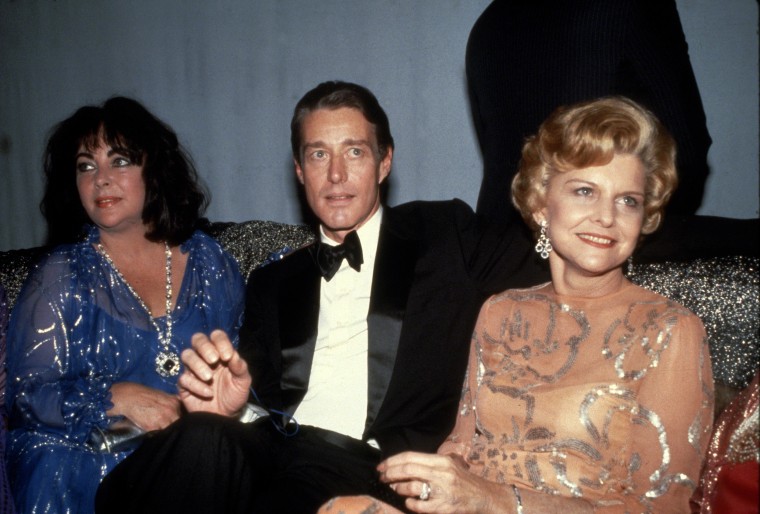
“The palette of the show goes from this really rich, full spectrum of color in the ’60s with all of that pattern until we go through the ’70s and ’80s and end up in a really reduced palette, with red, white, black and gray, and that was sort of the journey of Halston’s work,” Minahan shared, adding that they had to be judicious about which pieces to show in a particular collection due to high production costs.
“He had as much authorship over the interiors that he lived in as he did over the clothing that he made, so he was really involved with every one of those interiors,” he said. “The Olympic Tower was an entire build with floor-to-ceiling windows and cantilever mirrored walls, the blood-red carpets and an incredible backdrop, which was photographed from the real floor of the Olympic Tower and then repainted to remove modern things and restore things like the World Trade Center.”
While he was keen to highlight Halston’s loyal friendship with Liza Minnelli (played by Krysta Rodriguez), saying he believed that inseparable relationship was “really the heartbeat of the show,” Minahan said “the idea of a chosen family” was the one thing that always stood out to him about Halston.
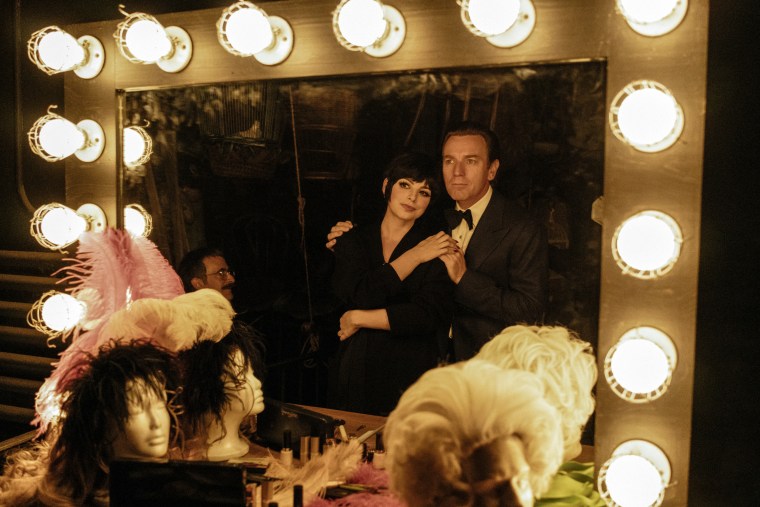
“He was always bringing people in. I met lots of people who he pulled into his orbit because he saw something special in them or he thought had merit or had a great spirit, but the idea of creating a family of creative people is an ambition of my own,” explained the veteran director, whose other television credits include “Six Feet Under,” “Game of Thrones,” “The L Word” and “Grey’s Anatomy.”
“It was also important to me that we celebrated his genius and explored his darkness and his complexity,” he added. “He was a self-created person in a particular time. He grew up in the ’50s, so he obviously grew up having to be closeted and was sort of unapologetic about being gay in the ’70s. He was very much a man of his time. I think gay people were stepping up and becoming very visible, so I think there’s a lot of complexity there.”
Halston tested positive for HIV in 1988. Eighteen months later, he died of an AIDS-related cancer called Kaposi’s sarcoma at the age of 57.
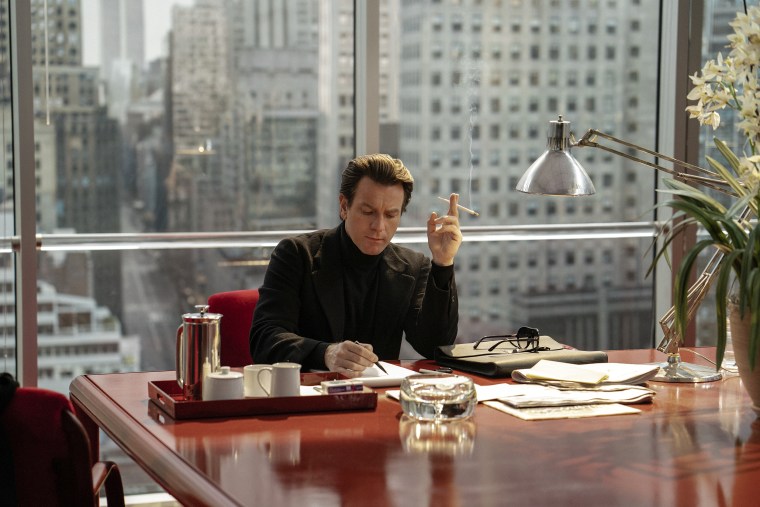
For Minahan, there was no other actor who could have played Halston better than McGregor. (“He was my No. 1 choice,” he said.) But in recent weeks, the limited series has come under fire for the decision to cast a straight actor in a major gay role — adding fuel to a complicated debate about which actors should be allowed to play which roles — and for its “inaccurate” and “fictionalized” depictions of Halston, with those claims coming specifically from the designer’s family.
“I spent 20-plus years working on this, so it really is a labor of love, and I wouldn’t have made it if I didn’t think it was a worthy subject and if I didn’t really love and want to honor Halston,” he said in response to the recent criticism. “I think what happened to him is unfair, and the people who were close to him and who have seen it have responded with incredible support and really felt like it was a beautiful homage to a real fashion icon.”
“I would just like people to recognize the influence that Halston had on American culture, from the way we dress to the way we identify,” he added. “He was in the forefront of marketing and branding, and I think the idea that that could all go away, that someone could be stripped of their identity and their ability to create, is a terrible thing. I’ve heard people say he’s the most famous person you’ve never heard of, and I would like more people to know about him and to learn from his story.”
“Halston” is now streaming on Netflix.

